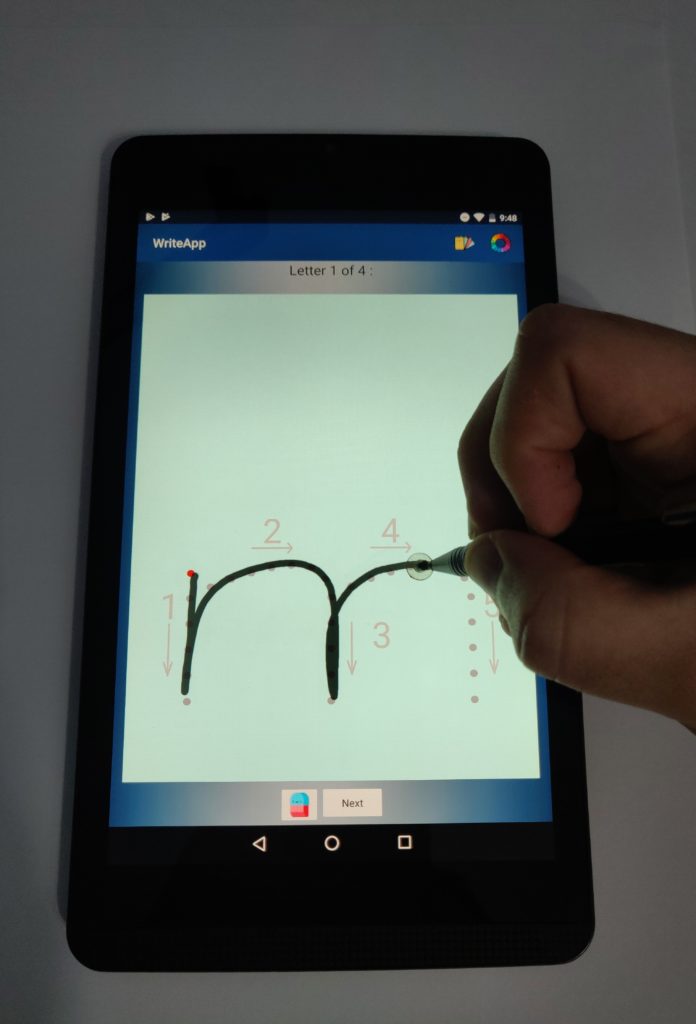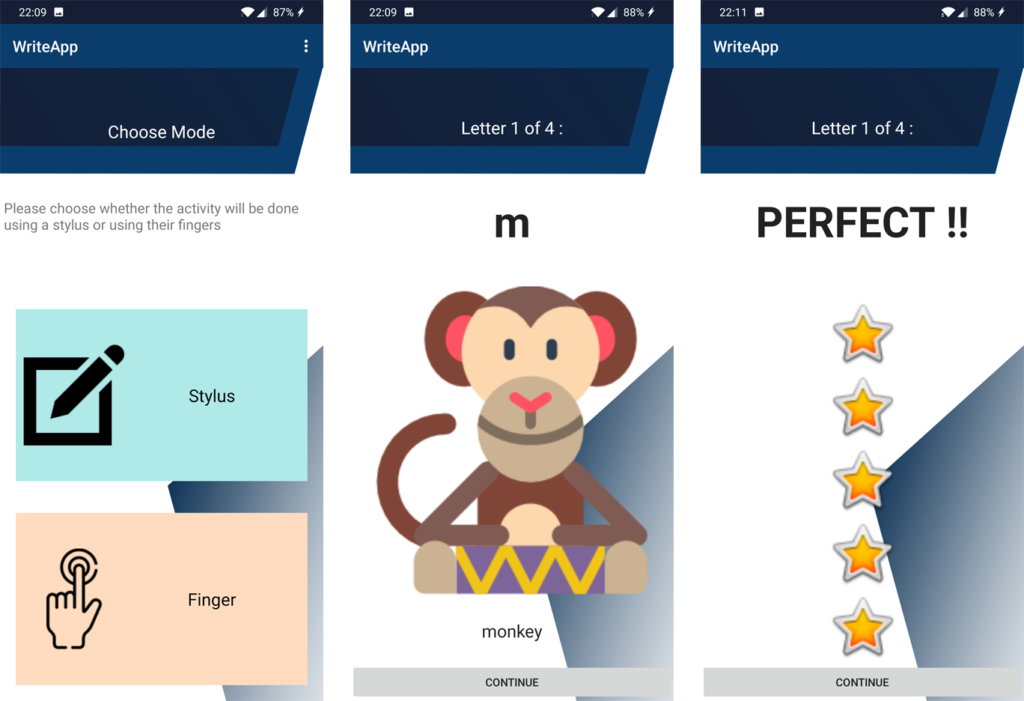Education is one of the fundamental aspects of children’s development, therefore, it is vital that the techniques being implemented, and the delivery methods used, are engaging enough for the children to enjoy. This especially important for children with disabilities. As observed by Engel et al. [1], a significant percentage (10-30%) of children suffered from difficulties when it came to handwriting, whether or not those children had a diagnosed disability. These difficulties will have ripple effects on other areas in their education, possibly contributing to lower attention spans, problems in speech and adverse effects in mathematical skills [1]. Therefore, the main aim of this project was to take one of the most tedious tasks for some children, namely handwriting, and develop an educational application to improve handwriting and the underlying fine motor skills. The project aimed to make a tedious task [2], [3] more exciting and therefore encourage children to practise handwriting more frequently. The application was developed in conjunction with domain experts, who were involved in both the requirements and evaluation stages. The development methodology consisted of choosing a software development life cycle that allowed for the application to be built iteratively so that feedback from one iteration could be used to improve the next. The result was an application that, according to the domain professionals, was not only excellent at helping to improve handwriting skills, but also helped improve those fine motor skills that are related to handwriting, such as hand-eye coordination (due to tracing the letter formation over system generated help points) and the tripod grip (when using a stylus).


References
[1] C. Engel, K. Lillie, S. Zurawski, and B. G. Travers, “Curriculum-Based Handwriting Programs: A Systematic Review With Effect Sizes,” The American Journal of Occupational Therapy, vol. 72, no. March, pp. 1–8, 2018.
[2] A. Baskin, “Sweating the small stuff: improving children’s fine-motor skills,” Today’s Parent, vol. 19, no. May, pp. 45–48, 2002.
[3] N. Kucirkova, D. Messer, K. Sheehy, and C. Fernández Panadero, “Children’s engagement with educational iPad apps: Insights from a Spanish classroom,” Computers and Education, vol. 71, pp. 175–184, 2014.
Student: Ryan Zahra
Supervisor: Dr Peter Albert Xuereb
Course: B.Sc. IT (Hons.) Software Development
